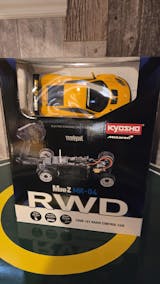Model trains have captivated enthusiasts for generations, transporting them into a miniature world of railway adventure and engineering marvel. The journey of model trains is as intricate as the intricate tracks that snake their way around sprawling layouts. This blog post delves into the rich history of model trains, exploring their evolution from simple toys to sophisticated replicas.
Early Beginnings (1800s)
The concept of model trains can be traced back to the early 19th century when the Industrial Revolution ignited a fascination with rail travel. The first toy trains were made from wood and powered by windup mechanisms or pulled by other toys. These early models laid the groundwork for what would become a beloved hobby.

The Birth of Electric Trains (1930s)
The 1930s brought significant advancements with the introduction of electric model trains. Lionel, an iconic American brand, popularized electric trains, making them safer and more accessible to families. The trains not only offered enhanced realism in terms of speed and functionality but also sparked the imagination of countless children and adults alike.
Post-War Boom (1940s-1960s)
After World War II, the popularity of model trains exploded. Veterans returned home with newfound interest in hobbyist activities, leading to an increase in model train clubs and societies. The 1950s saw the introduction of iconic brands like HO scale, which allowed for more detailed models and greater customization options. Train sets became a popular gift during the Christmas season, solidifying their place in holiday traditions.

The Golden Age of Collecting (1970s-1980s)
The '70s and '80s marked the golden age of model train collecting. Manufacturers began producing limited-edition models and era-specific replicas, drawing in collectors. This decade also saw the rise of clubs, conventions, and swap meets, where enthusiasts could share their passion and trade rare items. The technological advancements in plastic and metal also allowed for more intricate designs and finishes.

Modern Era and Digital Age (1990s-Present)
As technology advanced, so did model trains. The '90s and early 2000s brought digital command control (DCC) systems, allowing for sophisticated features like sound, remote operation, and the ability to run multiple trains on the same track independently. Today, model trains continue to evolve, embracing 3D printing and digital modeling techniques, further blurring the lines between reality and miniature worlds.


The Future of Model Trains
The future of model trains is bright, with a new generation of enthusiasts eager to explore this exciting hobby. Online communities, social media, and streaming platforms have made it easier than ever to connect with other hobbyists. As technology continues to advance, model trains are set to become even more immersive and interactive, ensuring their place in both history and the hearts of future generations.














